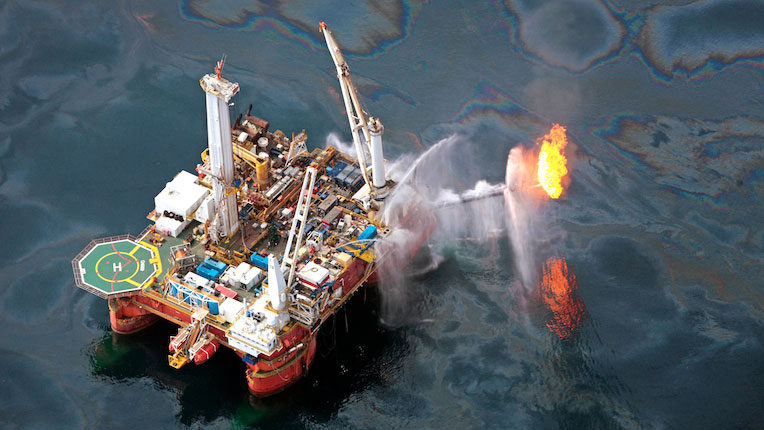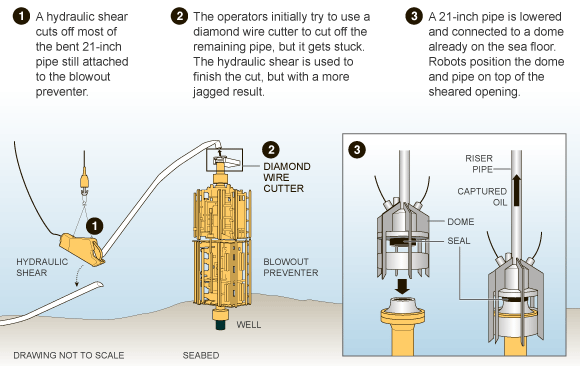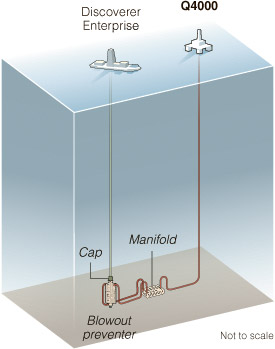Containment to Collection

Following the failure of the top kill, BP engineers turned away from attempting to shut the well in, for fear that instability in the well could lead to an "underground blowout," with oil and gas flowing into the ocean from many points on the sea floor. This would make containment nearly impossible, at least until the completion of a relief well. Thus, in the aftermath of the top kill, BP and the government focused on trying to collect the oil, with the relief wells still providing the most likely avenue for killing the well altogether.
MAY 31 | Another Attempt to Cap the Well

BP had a team ready to proceed with new collection tools almost immediately. On May 29, the company and the government announced that BP would attempt to cut off the portion of the riser still attached to the top of the BOP and install a collection device—the "top hat"—which would then be connected via a new riser to the Discoverer Enterprise above. By June 8, the Discoverer Enterprise was collecting nearly 15,000 barrels of oil per day.
JUNE 16 | Capturing More Oil

BP also developed a system to bring oil and gas to the surface through the choke line on the BOP. BP outfitted the Q4000, a vessel involved in the top-kill effort, with collection equipment, including an oil and gas burner imported from France. After it became operational on June 16, the Q4000 system was able to process and burn up to 10,000 barrels of oil per day.
On occasion, BP was overly optimistic about the percentage of the oil it could remove or collect, with officials saying that the approach would allow for the collection of the "vast majority" of oil. But when the Q4000 came online in mid-June, the two vessels' joint capacity of 25,000 barrels per day was still insufficient.
